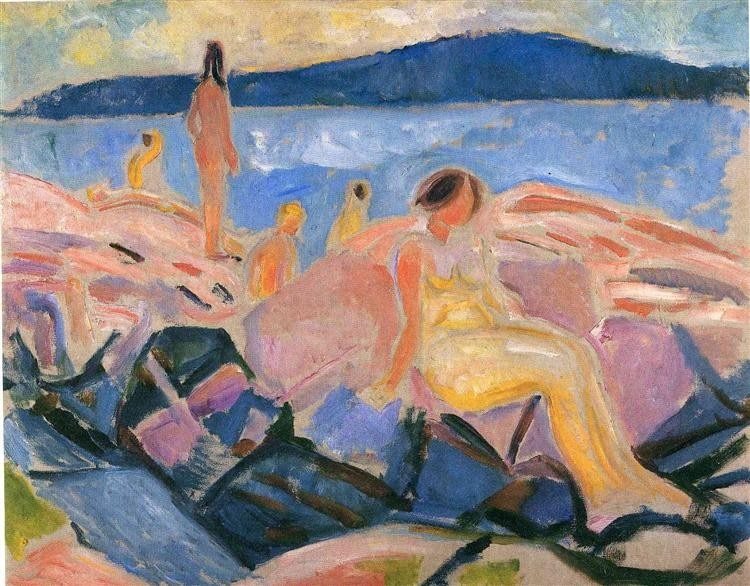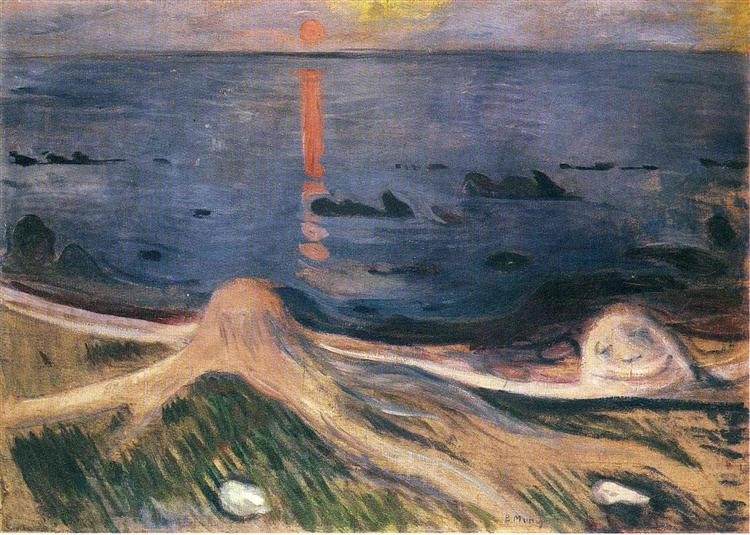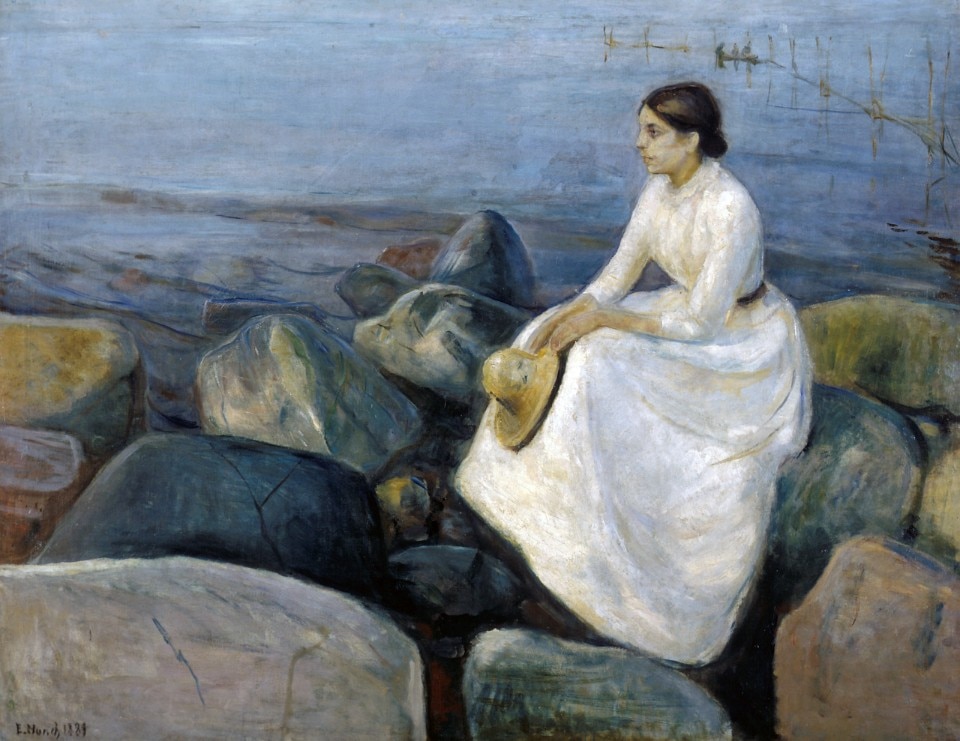“I was walking along the road with two friends – the sun was setting – suddenly the sky turned blood red – I paused”. A life plagued by dramatic emotional states, destruction, decay. This is how Edvard Munch describes his skies. Summer is almost here and, in some of his paintings, Munch tells us about it through ordinary moments of the hottest season. The painter sees and represents the sociality, the isolation, the landscapes, the conditions and circumstances that summer offers. In short, Munch paints what he sees – contexts that transcend his fears and become pure avant-garde. In Munch’s paintings, twisted and intricate fantasies and funereal and erotic obsessions find a positive expression often through the use of drawing and colour. These authentic and persistent images recreate the summer climate, giving rise to different emotions.
In High Summer, the Norwegian painter recreates a moment of extreme light-heartedness, where the use of harmoniously flowing and dynamic wavy lines, contrasted by more rigid ones, are mixed with bright and soft colours. Faceless figures offer themselves to the viewer, serene, carefree, in a moment of joyful summer everyday life. In the summer of 1889, Munch rented a modest house in Åsgårdstrand, a small tourist town in Norway, which he often depicts in his works. The painting Inger on the Beach narrates the summer season, too. A July evening. A portrait of her sister in a private, simple and usual holiday moment. A woman sitting on the rocks listening to the sea, enjoying the cool evening breeze. However, the work is not about Inger, nor about describing the landscape. On the contrary, it is through these two subjects that it narrates a state of mind.

“There was blood and tongues of fire above the blue-black fjord and the city – my friends walked on, and I stood there trembling with anxiety – and I sensed an infinite scream passing through nature”. This is what the artist wrote in his own diary. Here the representation is not direct, but the unease and fear can be perceived in the details. The sea is calm, still, motionless, there are no waves crashing on the rocks. The greyish, dark colours make the twilight atmosphere feel even more real. The woman stares off into space, lost. Munch deliberately does not include the rest of the landscape in the work, as it is not as important as his sister’s disorientation. This work not only describes the artist’s distress, as he paints his sister to talk about himself, his intimacy, and his life, but also recounts the thoughts of the spectators at sunset, the emblem of the end of human life.
A wound that destroys the apparent tranquillity of a summer evening. A tongue of blood that destroys the calm appearance of the water.
We might finish the story with another work, as to create a sort of imaginary triptych that goes from the hottest hours of the day to those of the night. Let us dwell then on an even more emblematic painting: The Mystery of a Summer Night. This time, the figures are completely absent. The subject is the sea, which Munch also uses to measure the evolution of his work, where he expresses his formal torments both through composition and colour. The landscape is once again narrated by dark colours, with strong brushstrokes, where the sea creates a marked, tense space, imbued with melancholy and solitude. A disturbing atmosphere rendered by energetic brushstrokes animated by violent colour contrasts due to the cold and warm tones of the sunset clashing with each other. A wound that destroys the apparent tranquillity of a summer evening. A tongue of blood that destroys the calm appearance of the water.

Munch’s work caught the attention of the future Fauves: Matisse, Derain, Marquet, Dufy, and Friesz admired the artist’s “wild precision and spiritual colour”, who became a forerunner of the chromatic research later conducted by these artists, a work which then prepared the artist for his greatest masterpiece, The Scream, an extreme synthesis of all his work and turmoil.
Opening image: Inger on the beach, Edvard Munch. 1889


